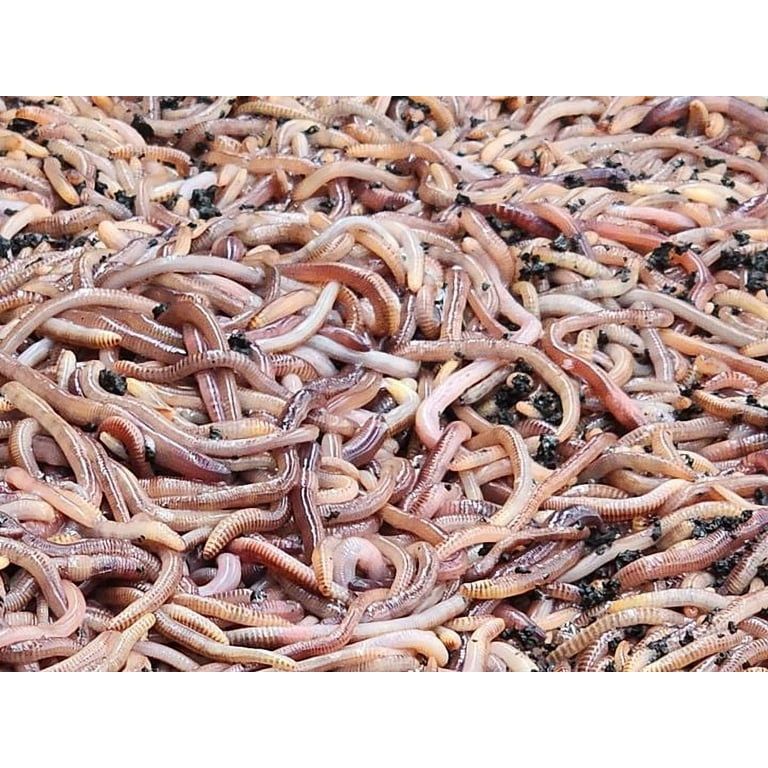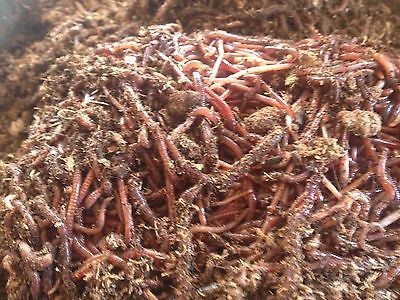Red wigglers: Find out their benefits
Red wigglers: Find out their benefits
Blog Article
Just How Red Wigglers Can Boost Your Organic Waste Recycling
Red wigglers stand for a critical component in boosting natural waste recycling, efficiently converting daily kitchen area scraps and garden particles into important worm castings. This process not only mitigates the volume of waste sent out to landfills but also enhances dirt vitality, advertising healthier plant growth without the demand for artificial fertilizers. Comprehending the details of developing a vermicomposting system and the optimum look after these worms can considerably intensify the advantages. The concern continues to be: just how can one successfully integrate this method into their regular to make best use of influence?

Advantages of Red Wigglers
Red wigglers, a type of composting earthworm, offer many advantages that make them important in natural waste recycling. These worms can process kitchen scraps, garden waste, and also paper items, changing them into nutrient-rich spreadings.
In addition, red wigglers enhance dirt oygenation and drainage with their tunneling tasks, promoting a healthier root setting for plants. Their castings are rich in useful bacteria and necessary nutrients, cultivating robust plant growth and improving dirt structure (red wigglers). Moreover, using red wigglers in composting is an ecologically friendly alternative to chemical fertilizers, which can have hazardous adverse effects.
Additionally, vermicomposting with red wigglers is a low-maintenance and effective approach of reusing organic waste, making it available for homes and areas alike. Their fast reproduction price makes sure a consistent supply for ongoing composting efforts, better magnifying their benefits. On the whole, red wigglers function as a crucial component in lasting waste monitoring and dirt improvement methods.
Setting Up a Vermicomposting System
Developing a reliable vermicomposting system calls for careful preparation and factor to consider of various variables that contribute to its success. The foundation of a successful system starts with selecting a proper bin. Choices vary from business containers to homemade alternatives, however it is critical that the container is well-ventilated and appropriately sized to accommodate the number of red wigglers.
Next, the choice of bed linens material is important. Appropriate bedding consists of shredded paper, cardboard, or coconut coir, which provides both an environment and a source of carbon for the worms. The bedding ought to be moistened but not excessively wet to avoid anaerobic problems.
Keeping the ideal atmosphere is essential. Red wigglers grow in temperatures between 55 ° F and 77 ° F(13 ° C to 25 ° C )and need a pH degree around neutral. Monitoring moisture degrees is additionally crucial, as way too much moisture can lead to smell issues, while insufficient can dry the worms.
Finally, putting the vermicomposting system in a shaded location protected from direct sunlight will certainly aid keep a steady atmosphere. With these considerations in mind, one can effectively establish up a thriving vermicomposting system that improves natural waste recycling.
What to Feed Red Wigglers
Feeding red wigglers the right materials is basic to keeping a healthy vermicomposting system. These worms thrive on a varied diet largely made up of raw material, which includes vegetables and fruit scraps, coffee premises, smashed eggshells, and shredded paper. It is vital to avoid feeding them meat, dairy products, oily foods, or any kind of refined things, as these can produce odors, draw in pests, and bring about an unhealthy environment.
A balanced diet plan for red wigglers advertises optimum digestion and nutrient manufacturing. Go for a mix of environment-friendly products, high in nitrogen, such as vegetable peels and grass cuttings, and brown products, abundant in carbon, like dried leaves and cardboard. This balance makes certain a sustainable food source while maintaining wetness levels in the worm bin.
Furthermore, it is suggested to slice or shred bigger scraps to quicken disintegration and make the food more easily accessible to the worms. Consistently monitoring the consumption rate will certainly assist identify the proper quantity to feed, avoiding overfeeding and keeping a prospering ecosystem. By offering an ideal diet, you not just support the wellness of red wigglers however also boost the efficiency of your vermicomposting initiatives.
Maintaining Your Worm Bin
To useful reference guarantee the wellness and performance of your vermicomposting system, maintaining your worm bin is vital. Routine tracking of wetness degrees is necessary; the bedding ought to perspire however not soaked. If it becomes too damp, excess dampness can lead to anaerobic problems, damaging your worms. On the other hand, if it is too dry, worms may end up being inactive or die.
Severe temperature levels can stress or kill your worms. To accomplish this, put your container in a climate-controlled atmosphere away from straight sunlight or warmth resources.
Oygenation is crucial for oxygen flow. Gently transforming the bedding with a garden fork every couple of weeks will help aerate the product and stop compaction. In addition, be watchful concerning the bin's smell. A nasty smell may show overfeeding or a discrepancy in the carbon-to-nitrogen proportion. If this happens, lower feeding and include more carbon-rich products like shredded paper or cardboard.
(Where To Buy Worms In North Carolina)
Using Worm Castings in Gardening

Worm spreadings, often referred to as "black gold" by garden enthusiasts, are a highly nourishing natural plant food that can substantially improve dirt wellness and plant development. These spreadings are generated by red wigglers as they absorb raw material, resulting in a rich, dark, crumbly material bursting with valuable bacteria.
Incorporating worm castings right into garden dirt enhances its structure, aeration, and wetness retention, producing an optimum setting for root growth. The high nutrient material of worm spreadings, including nitrogen, phosphorus, and potassium, adds to energetic plant development and raised yields. In addition, worm castings consist of important trace minerals and enzymes that advertise the overall health of plants, enabling them to much better stand up to pests and conditions.
Worm castings can be applied straight to the soil or combined into potting blends for container horticulture. A slim layer spread over yard beds or contributed to compost heaps can likewise enhance the microbial task and nutrient profile of the compost. As a lasting and environmentally friendly fertilizer option, worm spreadings support natural horticulture methods while reducing reliance on synthetic fertilizers, therefore cultivating a much healthier ecological community.
Conclusion
In final thought, the assimilation of red wigglers into organic waste reusing methods presents a sensible remedy for improving soil health and wellness and advertising sustainable horticulture techniques. By effectively decaying cooking area scraps and garden waste, red wigglers add to nutrient-rich worm castings that enhance soil oygenation and dampness retention. This environmentally friendly technique not just reduces land fill payments however additionally decreases the reliance on chemical plant foods, ultimately cultivating much healthier communities and liable waste monitoring practices.
Report this page